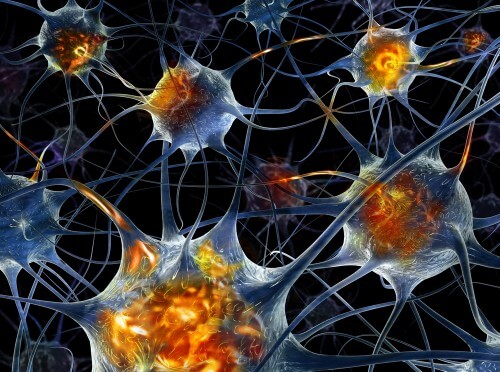The research may pave the way for the treatment of decreased learning ability due to damage to the DNA of nerve cells

A study led by Prof. Malka Cohen-Armon (Department of Physiology and Pharmacology in the Faculty of Medicine and the Segol School of Neuroscience) at Tel Aviv University, reveals a biochemical process necessary for the creation of long-term memory in neurons in brain areas responsible for learning. Identifying the mechanism may help improve learning skills after an injury. Also, age-dependent disruptions in the discovered mechanism may cause a decrease in learning abilities in older age.
Researchers from the Weizmann Institute, led by Prof. Menachem Segal (neurobiology), and researchers from the Biotechnology Institute in Strasbourg and Thomas Jefferson University, Philadelphia, participated in the study.
The study was recently published in the journal Scientific Reports from the Nature group.
"The nerve cells in the brain are connected in an intricate network of millions of fibers connected by connections (synapses), where the nerve signals are transmitted from cell to cell," explains Prof. Amron. "Based on existing knowledge, it is common to think that the process of creating long-term memory is conditioned by changes in those synapses, or by the creation of new synapses in the centers of the brain responsible for learning. Despite the extensive knowledge that has been accumulated, the mechanisms underlying the learning process are unknown. Apparently the exposure to external information translates into electrical stimulations at different frequencies in brain centers responsible for learning. The stimulation is "translated" into the creation of proteins involved in long-term structural changes in the synapses (Synaptic Plasticity. These changes are attributed to long-term memory. The research actually discovered a mechanism in which the electrical stimulation of the nerve cells is translated into changes in the synapses."
In the past, Prof. Amron published in the scientific journal Science that a nuclear protein called PARP1, which exists in all animal and plant systems and is involved in the repair of DNA breaks, is also necessary for the acquisition of long-term memory. The new research reveals the biochemical mechanism by which this protein is involved in the learning process.
In these experiments, nerve cells isolated from brain regions responsible for learning were electrically stimulated, and biochemical processes that occur in the cell nuclei in response to stimulation were deciphered. The work combined electrophysiological measurements, with structural chemistry and molecular biology methods. A stimulation frequency-dependent mechanism has been identified that brings together a "signal receiving" protein that reaches the nerve cell membrane with the nuclear protein PARP1. The activation of PARP1 in this process allowed the immediate translation of the electrical signals into the expression of "immediate early genes" (immediate early genes) that code for the creation of long-term changes in the synapses connecting the nerve cells.
The ability to learn in the third age is impaired
In the nerve cells in the brain of an adult (which do not change from birth to death) DNA fragments accumulate during his life. Prof. Amron explains: "PARP1 is a protein that binds to DNA breaks and is involved in their repair." In the study it was found that a structural change in the PARP1 protein when it binds to DNA prevents its binding to the "signal receiver" protein. Thus, DNA breaks suppress the stimulus translation mechanism in nerve cells for the expression of "fast genes" and changes in synapses. It was also found that glutenin (the substance that gives red wine its tartness) prevents the binding of PARP1 to DNA, thus preserving the expression of the "fast genes" in response to stimulation even in the presence of DNA breaks. This discovery may pave the way for treating the decline in learning ability due to damage to the DNA of nerve cells in old age or disease. Glutenin treatment has been successfully tested in old rats in other research groups in the world, but has not yet been tested in humans.

One response
Beautiful. Although many will shake their heads - well, a discovery 70 years after we knew about the existence of such a memory, understanding the mechanism can have consequences.